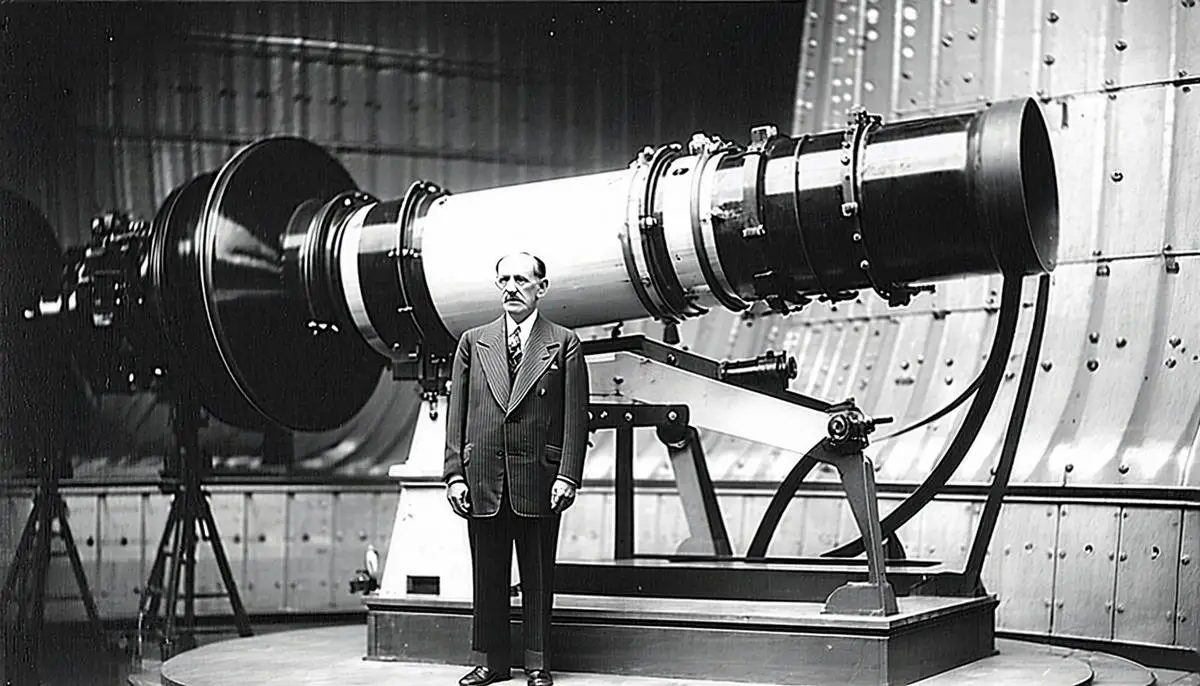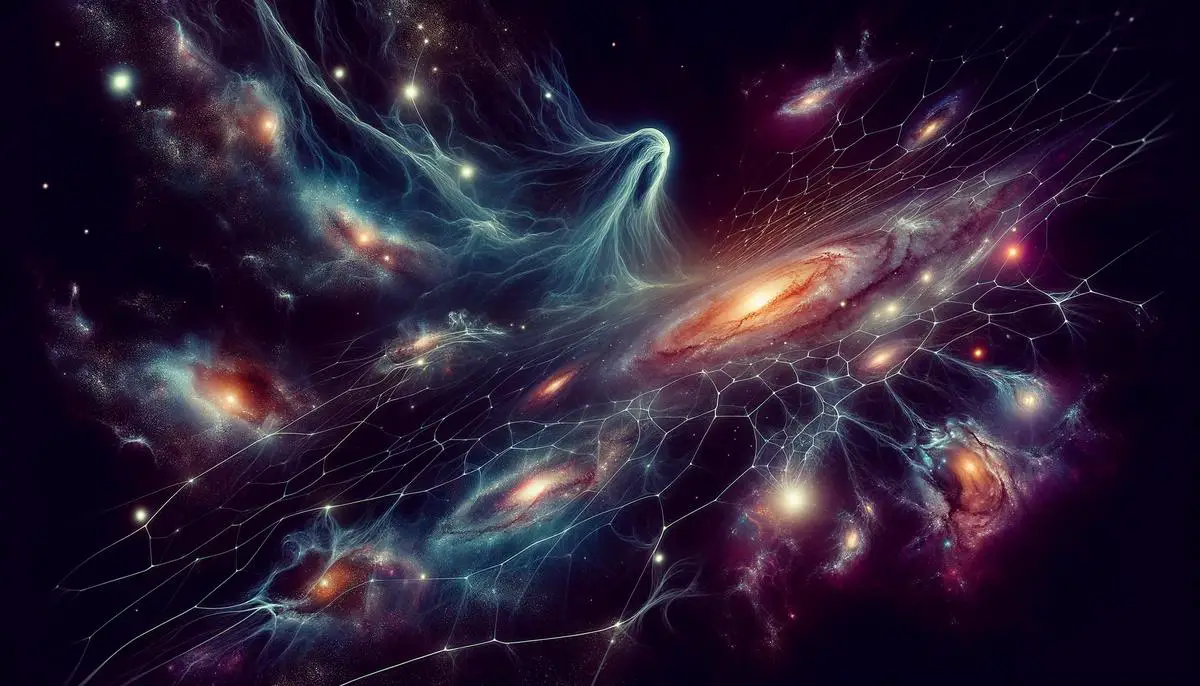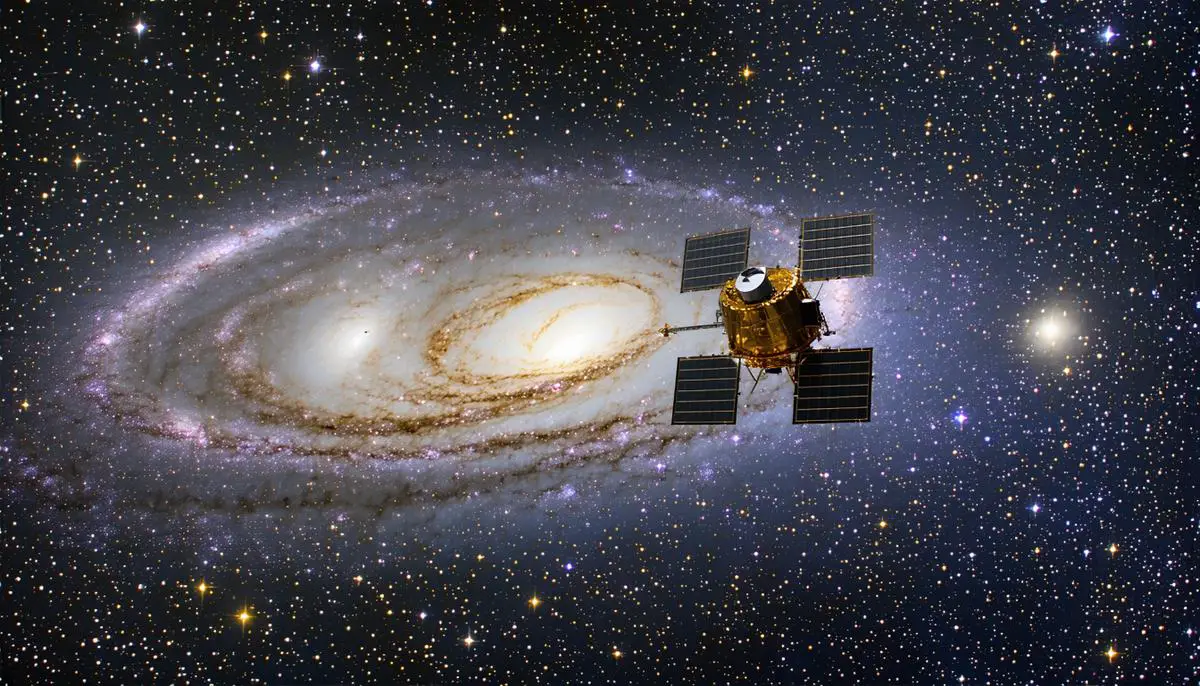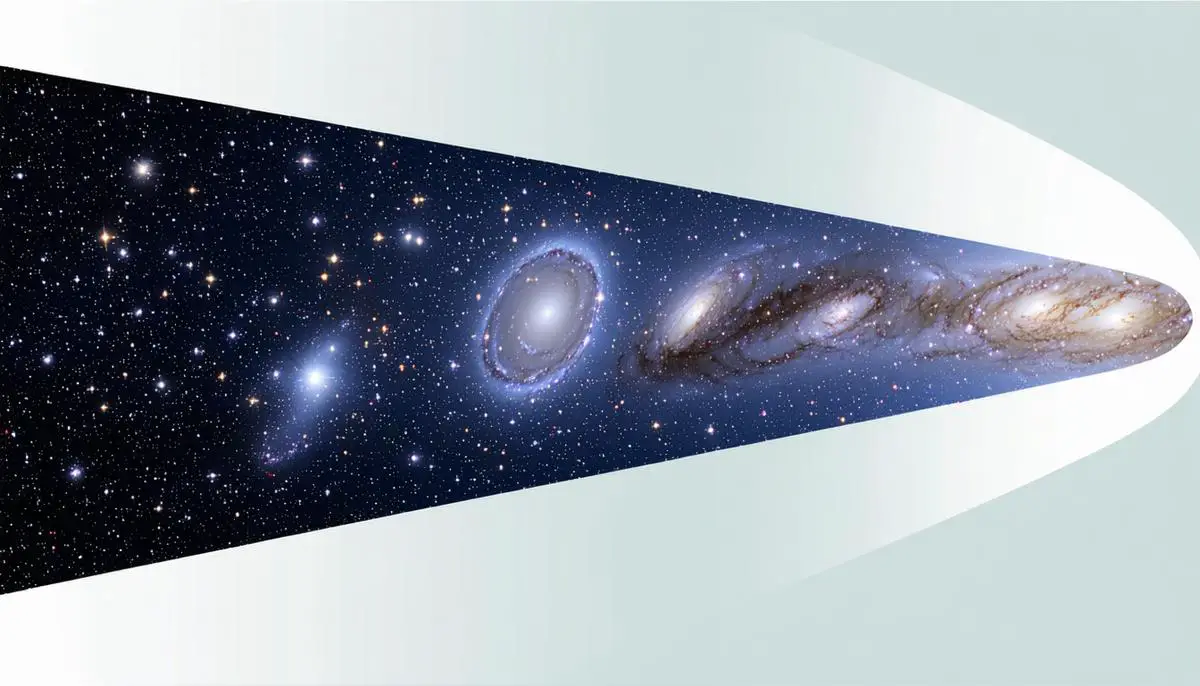The universe, with its boundless expanse and intricate dance of celestial bodies, has long captivated astronomers and scientists. As we look to the stars, we uncover stories of cosmic expansion and the forces that shape our understanding of space and time. This journey through the cosmos reveals the mysteries of universe expansion, the challenges in measuring it, and the enigmatic forces at play.
Historical Context of Universe Expansion
Edwin Hubble's 1929 discovery revolutionized our understanding of the cosmos. Using the 254-centimeter telescope at Mount Wilson, Hubble observed that distant galaxies were moving away from our Milky Way at speeds proportional to their distance. This revelation led to the formulation of Hubble's law, establishing that the universe is expanding.
Before Hubble's breakthrough, the prevailing view was that of a static universe. Vesto Melvin Slipher's earlier redshift discoveries had hinted at galactic motion, but the scientific community remained skeptical. Even Einstein had initially dismissed the idea of an expanding universe, introducing a cosmological constant to maintain a static model.
Hubble and Milton Humason's meticulous observations and data collection gradually shifted the scientific consensus. By plotting galactic redshifts against distance, they provided compelling evidence for cosmic expansion. Einstein eventually retracted his static universe model, famously calling his cosmological constant his "biggest blunder."
As astronomical technology advanced, observations across various wavelengths—radio, X-ray, visible, and infrared—further confirmed the expanding universe theory. This expansion raised new questions about the universe's origin and ultimate fate, spurring ongoing research into cosmic evolution and the forces driving this grand cosmic journey.

Measuring the Hubble Constant
The Hubble constant, which quantifies the universe's expansion rate, is measured through several complementary methods. The cosmic distance ladder is a primary approach, utilizing a series of distance indicators to gauge cosmic distances progressively.
- Cepheid variables: Stars with predictable brightness fluctuations
- Type Ia supernovae: Cosmic explosions serving as standard candles
- Cosmic microwave background (CMB) radiation: Afterglow of the Big Bang
Despite the precision of these methods, they occasionally yield slightly different values for the Hubble constant, leading to what's known as the "Hubble tension." This discrepancy has sparked debates and investigations, potentially hinting at undiscovered physics or refinements needed in our cosmic models.
As our observational techniques and theoretical understanding evolve, we continue to refine our measurements of the Hubble constant, each advancement bringing us closer to unraveling the mysteries of cosmic expansion.

The Hubble Tension
The Hubble tension refers to the discrepancy between different measurements of the universe's expansion rate. Observations using the cosmic distance ladder suggest an expansion rate of about 73.5 kilometers per second per megaparsec, while measurements from the cosmic microwave background (CMB) indicate a slower rate of approximately 67.8 kilometers per second per megaparsec.
"We've been at this 'Hubble tension' level for a long time. At some point the community needs to say, 'This is more serious,'" says physicist Dan Scolnic of Duke University. "And the step up from 'tension' is 'crisis.'"
This disagreement is more than a mere statistical fluctuation; it could signify gaps in our understanding of cosmic physics. The discrepancy has prompted intense scrutiny and research, with astronomers and cosmologists exploring various explanations:
- Properties of dark matter or dark energy not yet accounted for in our models
- New, undiscovered forces or particles influencing cosmic expansion
- Potential flaws in our understanding of the early universe
The resolution of this tension could have profound implications for our understanding of the universe's composition, evolution, and ultimate fate. It serves as a reminder that our cosmic models, while remarkably successful, may still be incomplete.
As we continue to gather data from advanced telescopes like Hubble and James Webb, as well as ground-based observatories, we edge closer to resolving this cosmic conundrum. The Hubble tension exemplifies how seemingly small discrepancies can lead to significant advancements in our understanding of the universe.
Role of Dark Energy and Dark Matter
Dark energy and dark matter play crucial roles in our understanding of cosmic expansion and structure. Dark energy, comprising about 68% of the universe, is thought to be responsible for the accelerating expansion observed in recent cosmic history. It acts as a repulsive force, counteracting gravity on the largest scales.
Dark matter, making up approximately 27% of the universe, provides the gravitational scaffolding for cosmic structure. While invisible to direct observation, its gravitational effects are evident in the rotation of galaxies and the formation of large-scale structures.
These two components are central to the standard cosmological model (ΛCDM), where Λ represents the cosmological constant associated with dark energy, and CDM stands for cold dark matter. This model has been remarkably successful in explaining various cosmic observations, from the distribution of galaxies to the properties of the cosmic microwave background.
However, the exact nature of dark energy and dark matter remains one of the biggest mysteries in modern physics. Key questions include:
- Could dark energy's properties vary over time or space?
- Might dark matter interact with normal matter in ways we haven't yet detected?
- Are there new properties of these components that could explain the Hubble tension?
The Hubble tension and other cosmological puzzles may be hinting at new properties of dark energy or dark matter, or perhaps even new physics beyond our current understanding. As we continue to explore the cosmos with increasingly sophisticated instruments and theories, we may uncover new insights into these enigmatic components, potentially revolutionizing our understanding of the universe's past, present, and future.

Recent Advances and Observations
The latest advancements in telescopic technology have revealed new aspects of the cosmic expanse, allowing us to examine the universe's expansion with unprecedented precision. Observations from the Hubble Space Telescope and the James Webb Space Telescope (JWST) have both reinforced and challenged researchers in their pursuit of the Hubble constant.
For decades, the Hubble Space Telescope has been crucial in refining calculations of the universe's expansion rate. Using observations of Cepheid variables and Type Ia supernovae, Hubble has set a high standard in the cosmic distance ladder. The JWST now builds upon this foundation with its advanced suite of observational tools.
Exploring the universe with high-resolution infrared capabilities, the JWST has peered further and with greater detail into the cosmic clockwork. Its observations have confirmed Hubble's findings, examining Cepheid variables with unmatched clarity. The Hubble constant remained steady at around 73 kilometers per second per megaparsec when measured by local methods.
However, the apparent disparity between local universe measurements and those inferred from the cosmic microwave background (CMB) persists. The JWST's careful examination enhances the evidence, highlighting discrepancies that might suggest new physics beyond our current models.
Through observations of gravitational lensing and precise mapping of type Ia supernovae, the JWST extends past work, studying galaxies far beyond Hubble's reach. It presents a view of the cosmos where established certainties are questioned, and the roles of dark energy and matter in cosmic evolution are reconsidered.
The combination of JWST's infrared revelations with Hubble's legacy data has intensified the debate surrounding the Hubble tension. This collaborative effort urges scientists to investigate deeper into the mysteries of dark energy and the underlying physics that might reconcile the conflicting measurements of the universe's growth.
As our instruments become more sophisticated, their revelations bring us closer to solving the enigma of the universe's expansion—and perhaps, understanding our cosmic origin and fate.

In our quest to understand the universe's expansion, we find ourselves at the intersection of observation and theory. The pursuit of knowledge about dark energy, dark matter, and the Hubble tension is not just a scientific endeavor but a testament to humanity's enduring curiosity. As we continue to study the cosmos, we are reminded that each revelation brings us closer to comprehending our place in this vast universe.
![]()
